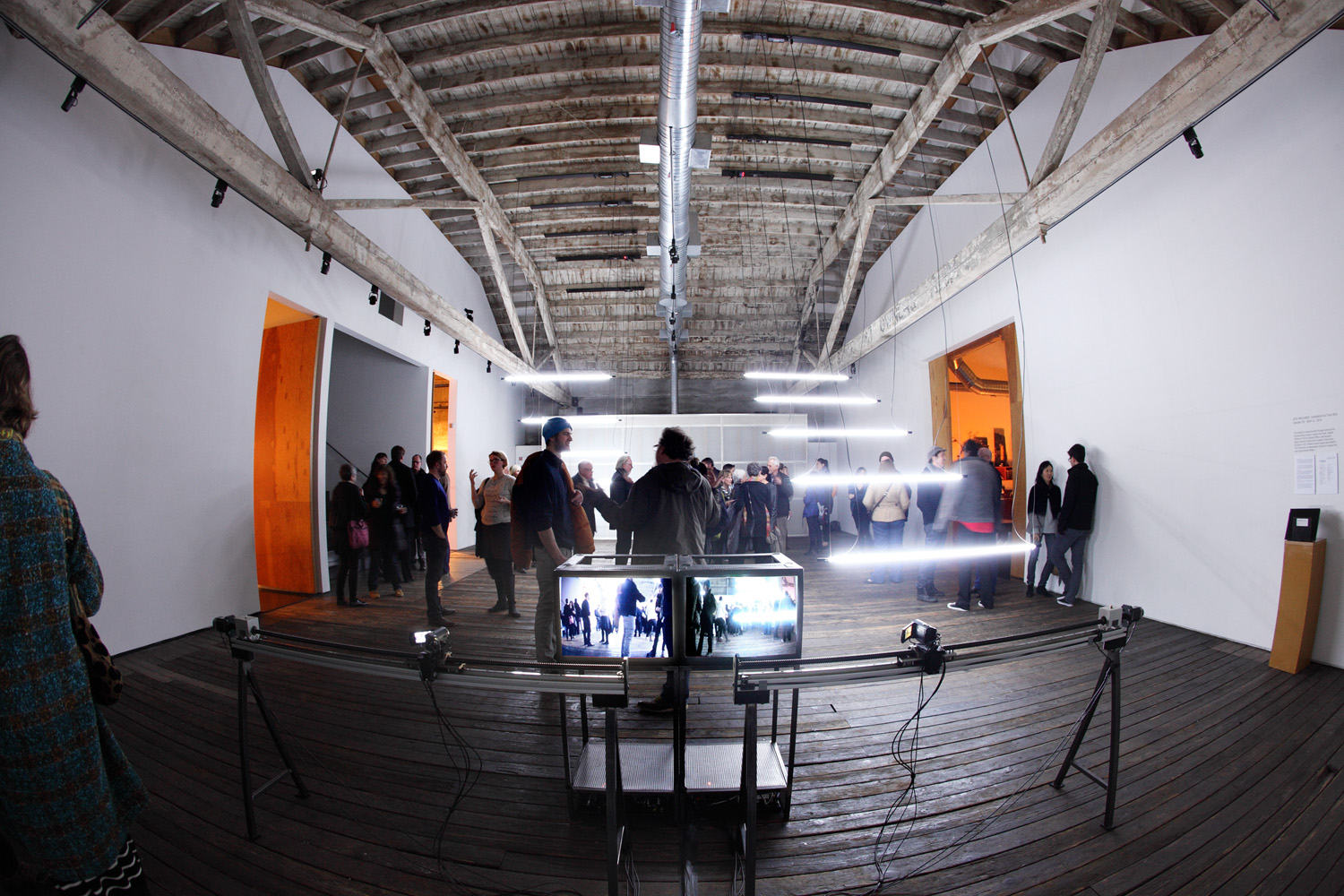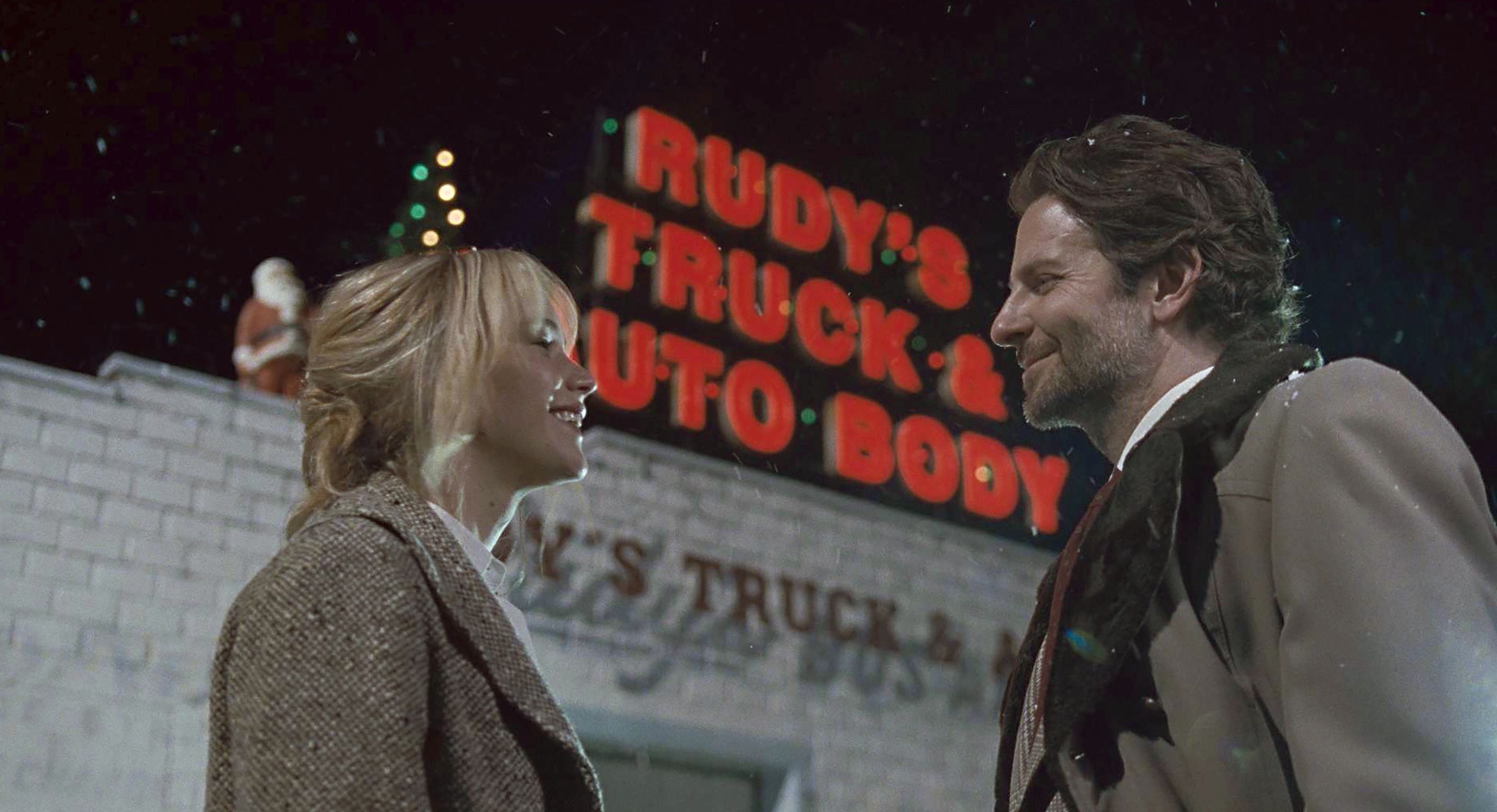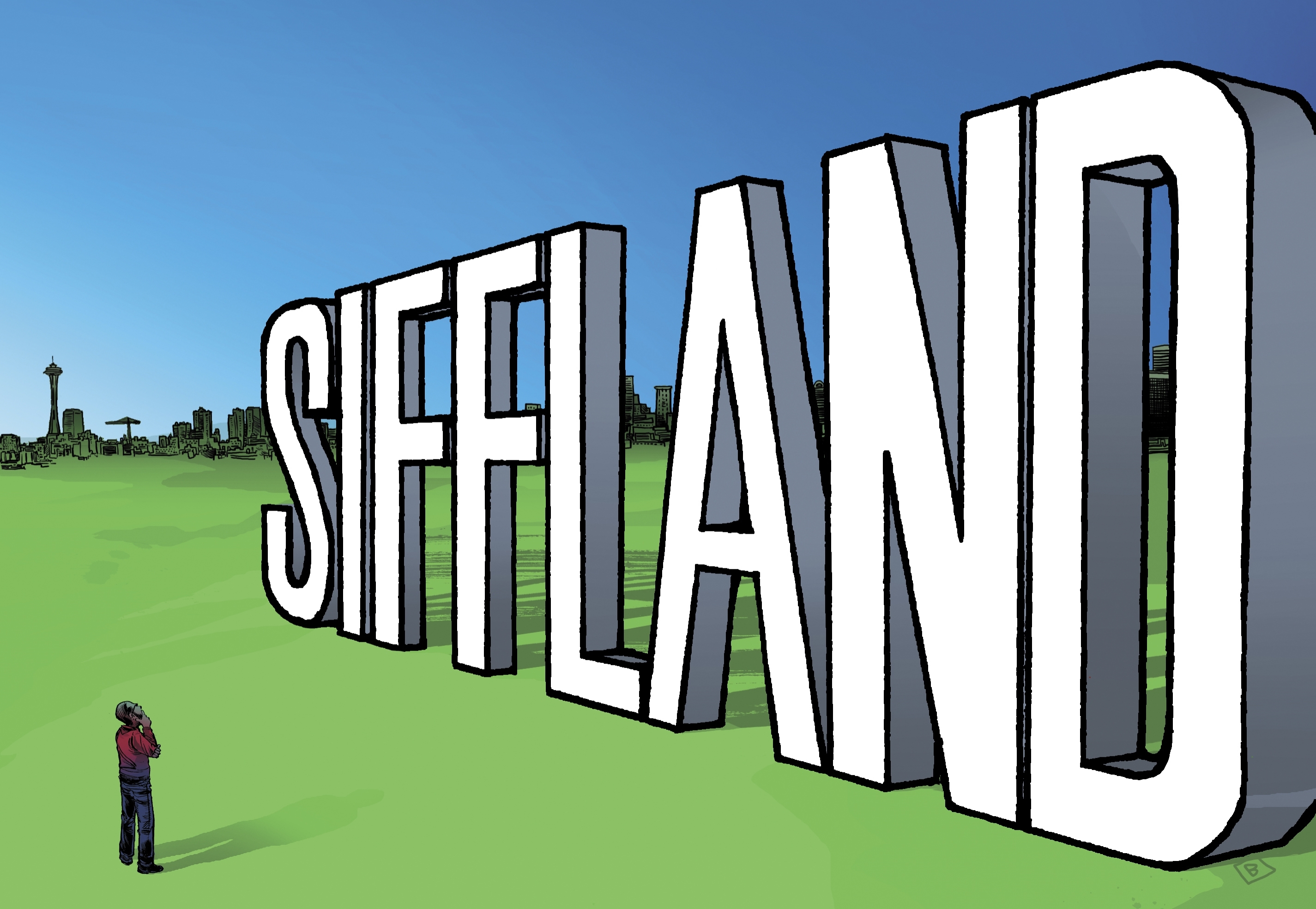Every local artist wants to do a show at Suyama Space, the atrium-lit old gallery hosted in a Belltown architect’s office. Once a garage, its creaking timbered floor and wooden trusses above convey a very functional sense of integrity. It’s not a frivolous or frou-frou kind of space, and each artist (or team) selected for an exhibit is flattered by the serene expanse. Every show is a solo show, and the work only has to compete with—or complement—the gallery itself. Elsewhere, as at the Guggenheim or its Bilbao annex, that task can be overwhelming: How can the artist measure up to architectural genius?
Tivon Rice’s interesting new Site Machines is in no way overmatched by Suyama Space, though it does fall into the trap, which I’ve seen here before, of engaging with the building. The light-and-video installation deploys six cameras that feed into two viewing stations. Sometimes you’re looking at the gallery from the rafters; sometimes you’re seeing old architectural models and archives kept in the basement; and sometimes the moving cameras film the video monitors themselves, creating colorfully striated feedback effects (“rescanning” in video parlance).
Ten neon tubes are hung horizontally from the ceiling, stair-stepping in opposite directions, giving the gallery an eerie sheen. They, like the cameras, are following Rice’s programmed script, flicking on and off in concert with the pausing and panning cameras. (I’d advise going late in the day, or when it’s cloudy above.)
“It’s not really interactive,” says Rice while walking me through the exhibit last week. “It’s more a series of composed movements. It’s about an hour long.” Though he can control the whole apparatus via laptop, those three symphonic movements never change tempo or pattern. Site Machines isn’t responding to the architects and clients who periodically wander through the atrium (unlike Sanctum, up at the Henry, also produced by members of the UW’s DXArts program, or Mirror at SAM). Rather, Rice’s piece is all about the building, its past and present uses. Since we can’t venture into the basement, those cameras reveal a hidden past—“this really bizarre series of old models and things”—like robots spelunking in a cave or diving down to Titanic.
Rice’s modern little Sony digital cameras are of our present technological world, but the two in the main gallery are mounted on grinding, spiraling, mechanical rails. Like the turning of a lathe, they produce a calming, almost industrial sound—part of the ambient room tone Rice is also recording and amplifying. Next to them are a pair of clunky old analogue monitors, CRTs into which the cameras regularly peer. In this clash of decades, “These two old monitors create more of a sculptural installation,” says Rice.
Walking over to the modern flat-screen digital TV, located in an alcove up a short flight of stairs, feels like trekking forward in time. Then you reverse the trip, much as Rice’s cameras constantly track and toggle back and forth. He says, “There’s a dialogue about nostalgia built into Suyama Space”—one that’s endlessly repeating. For Rice, Site Machines is about “watching sculpture, watching architecture. This project tries to put those two in dialogue—slick new stuff and very evidently old stuff . . . that new-thing-looking-at-that-old-thing phenomenon. Suyama Space has both of those things happening at the same time.”
Curated by Beth Sellars, Suyama Space has long been one of my favorite galleries, precisely for its singular artist focus and Zen-like calm. Rice’s new project has an almost musical consonance that fits the space, where we can linger through time and try on new perspectives. Yet Site Machines is essentially giving us all those views at once. The constantly flipping and shifting cameras make you think of a gecko’s independent eyes or a spider’s prismed vision.
Presenting so much visual information at once, multiplying both sound and image, also puts you in mind of an architect’s set of drawings: elevation, schematic, floor plan, reflected ceiling plan, etc. With an architect, of course, there’s a final unity of vision; the design is supposedly coming from one person. (Though any working architect will differ, given client demands.)
Here, Rice’s goal is “to look at the space as many ways as possible.” It’s not his space, but his new visual program for seeing the space, like trying on a fresh pair of eyeglasses. Our vision is both augmented yet confounded. You can’t always be sure what—or when—you’re seeing, and this is also part of Rice’s agenda: “to create a puzzle,” he says. “Is what you see live or delayed?”
But how much more do I really want to know about this building or its provenance? Site Machines isn’t annoyingly meta or conceptual, but I’d rather Rice’s program looked beyond the four walls—like Suyama’s prior show, Drawn From the Olympics, which referred outward to our Northwest rainforests and paper production. Site Machines is entirely interior—and never more so than when the cameras look back into their monitors, creating a pixilated M.C. Escher regress.
And, no, Rice’s video isn’t being uploaded to YouTube. To see these images of the building, you have to visit the building—then perceive it through three other pairs of eyes.
bmiller@seattleweekly.com
SUYAMA SPACE 2324 Second Ave., 256-0809, suyamaspace.org. Free. 9 a.m.–5 p.m. Mon.–Fri. Ends April 11.








